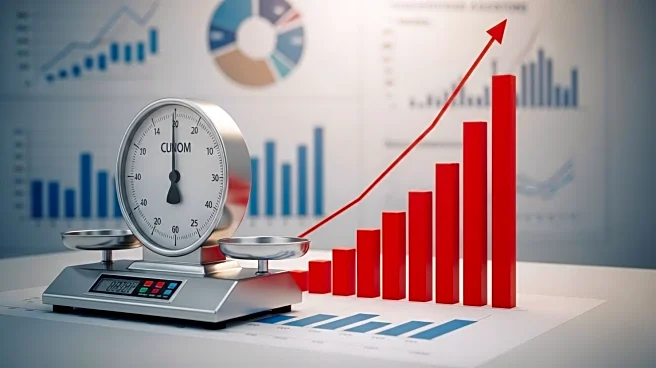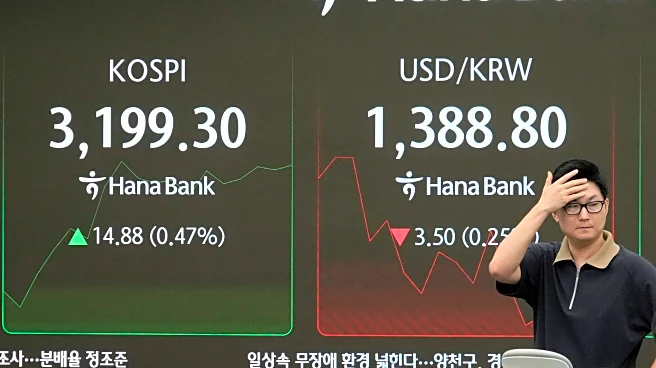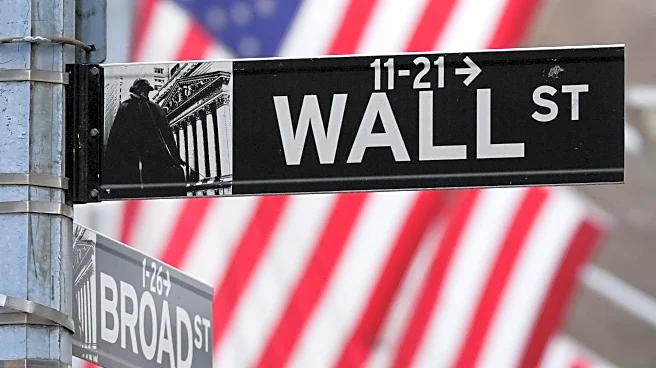What's Happening?
Recent data indicates that U.S. inflation at the wholesale level has accelerated, with the Producer Price Index (PPI) rising by 0.9% in July, marking the fastest monthly increase since June 2022. This surge has lifted the annual rate to 3.3%, according to the Bureau of Labor Statistics. The PPI, which measures price changes paid to producers, is seen as a precursor to consumer price inflation. Economists are concerned that the higher costs faced by producers, partly due to tariffs imposed by President Trump, will soon be passed on to consumers. The Dow Jones Industrial Average fell 175 points at the opening bell on Thursday, reflecting market concerns over inflation. The broader S&P 500 and Nasdaq Composite also experienced declines. The PPI data suggests that inflationary pressures are building, particularly in the service sector and agricultural products, which have seen significant price increases.
Why It's Important?
The rising PPI indicates potential inflationary pressures that could affect consumer prices in the near future. This development is significant for U.S. businesses and consumers, as it suggests that the costs associated with tariffs are beginning to impact the economy more broadly. If producers pass these costs onto consumers, it could lead to higher prices for goods and services, affecting purchasing power and economic stability. Additionally, the unexpected inflation data may influence the Federal Reserve's decision-making regarding interest rates, as traders have adjusted their expectations for a rate cut in September. The broader economic implications include potential shifts in consumer spending and business investment, as well as challenges for policymakers in managing inflation while supporting economic growth.
What's Next?
The Federal Reserve's upcoming meeting in September will be closely watched, as the central bank may need to reassess its monetary policy in light of the inflation data. Economists and market analysts will be monitoring the August jobs report, set to be released on September 5, for further insights into labor market conditions and their impact on inflation. Businesses may need to strategize on how to manage rising costs, potentially leading to price adjustments or changes in supply chain operations. The nomination of E.J. Antoni to lead the Bureau of Labor Statistics could also influence future economic data reporting and methodology.
Beyond the Headlines
The broader implications of the tariffs and inflation data include potential shifts in U.S. trade policy and economic strategy. The reduction in data collection by the Bureau of Labor Statistics, due to resource constraints, highlights challenges in accurately assessing economic conditions. This situation underscores the need for adequate funding and support for federal statistical agencies to ensure reliable economic data. The evolving economic landscape may also prompt discussions on the balance between protectionist trade policies and their impact on domestic inflation and consumer welfare.












